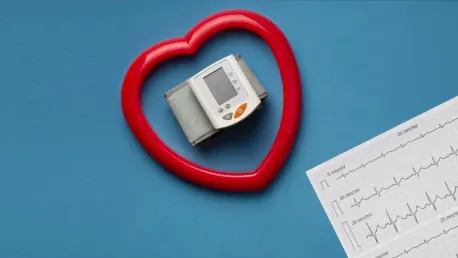In the chaotic and high-stakes environment of emergency departments, time is of the essence, especially when dealing with potential heart attack patients. Advances in medical diagnostics can drastically change the landscape of emergency care, offering new tools to clinicians for swift and accurate decision-making. One such breakthrough is the new high-sensitivity cardiac troponin I assay developed by Mindray. This innovative test has shown exceptional promise in quickly and accurately identifying or ruling out heart attacks among patients presenting with related symptoms, thus potentially saving lives and reducing unnecessary hospital admissions.
Precision in Diagnosing Cardiac Events
The Innovators Behind the Assay
This high-sensitivity cardiac troponin I assay is a result of Mindray’s strategic acquisition of HyTest, a pioneering Finnish company known for its biomarker research. Following this acquisition, Mindray enhanced the assay’s precision and sensitivity, making it an invaluable tool for emergency departments. Researchers at Hennepin Healthcare’s Hennepin County Medical Center in Minneapolis were among the first to validate this development. Their studies demonstrated that the assay delivers reliable results for both male and female patients, a significant improvement over previous methods.
The study focused on more than 1,500 patients who came to the emergency room with symptoms like chest pain, arm pain, or jaw pain, which are commonly associated with heart attacks. Remarkably, the study found that about 15% of these early presenters could be ruled out for a heart attack based on a single blood test administered upon arrival. This marks a significant improvement over traditional methods that often require more time-consuming and less precise tests, highlighting the potential for quicker and more accurate triage in emergency settings.
Clinical Implementation and Impact
Most traditional cardiac assays rely on dual-testing approaches: an initial blood test sets a baseline measurement, followed by a secondary test two hours later to detect changes in cardiac troponin I levels. Applying this methodology to the Mindray assay revealed that researchers could rule out an additional 30-40% of patients with suspected heart attack symptoms, with less than a 1% probability of an adverse cardiac event within 30 days. This dual-testing strategy significantly enhances diagnostic accuracy while reducing the waiting time for patients, which is crucial in emergency care settings.
Altogether, the study found that approximately 60% of patients presenting with potential heart attack symptoms could be safely discharged based on the Mindray assay results. This reduction in unnecessary hospital admissions alleviates the burden on already crowded emergency departments and provides patients with quick reassurance, reducing their anxiety. Professor Fred Apple, the principal investigator, emphasized that while cardiac troponin alone doesn’t diagnose a heart attack, it plays a critical role in confirming whether the heart has sustained injury.
Advantages and Future Applications
Potential for Reducing Emergency Room Overcrowding
Implementing the high-sensitivity cardiac troponin I assay into everyday clinical practice could significantly enhance the safety and efficiency of patient triage in emergency departments. A reduced need for hospital admissions means fewer resources spent on unnecessary diagnostic procedures and overnight stays. This will not only streamline hospital operations but also improve patient flow, ensuring that those who need immediate care receive it promptly.
Moreover, the high positive predictive value of the assay—hovering around 70%—aids clinicians in making timely decisions about admitting patients. These results underscore the test’s potential to quickly identify patients who are at genuine risk of a heart attack, ensuring they receive the immediate care they need. The positive implications extend beyond individual institutions and could potentially shape nationwide protocols for handling suspected heart attack cases.
Looking Ahead: Broader Implications
Researchers are optimistic about the broader applications of such high-sensitivity assays. Future studies aim to explore how high-sensitivity cardiac troponin I and T assays can help distinguish between chronic and acute myocardial injuries. This differentiation could guide the appropriate treatments and therapies, tailoring medical care to individual patient needs more precisely. These advancements not only promise better patient outcomes but also signify a more personalized approach to cardiac care.
The study, while still awaiting peer review, adheres to high ethical standards and conforms to regular hospital procedures. It underwent scrutiny from the Institutional Review Board (MERITnI), ensuring that findings reflect routine clinical practices. Once peer-reviewed and validated, these findings could mark a landmark change in how emergency departments handle potential heart attack cases, streamlining processes and improving patient health outcomes.
Conclusion
In the bustling and high-pressure world of emergency departments, every second counts, especially when it comes to treating potential heart attack patients. Time is a critical factor, as swift and precise diagnoses can mean the difference between life and death. Innovations in medical diagnostics can significantly transform emergency care by equipping clinicians with advanced tools for rapid and accurate decision-making. One notable development is the high-sensitivity cardiac troponin I assay created by Mindray.
This cutting-edge test has exhibited remarkable potential in expeditiously and accurately diagnosing or ruling out heart attacks in patients who exhibit relevant symptoms. By enabling quicker identification of heart attack incidents, this assay can help save lives while also cutting down on unnecessary hospital admissions, ensuring that emergency department resources are used more effectively. This advancement underscores the ongoing evolution in medical technology designed to enhance patient care and outcomes in high-stakes settings.









